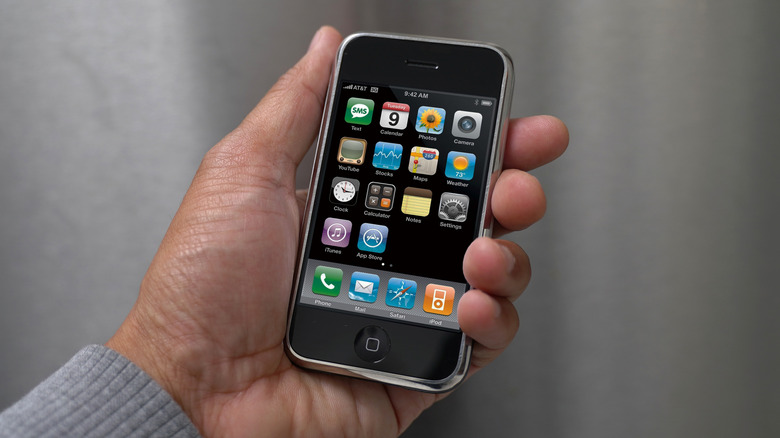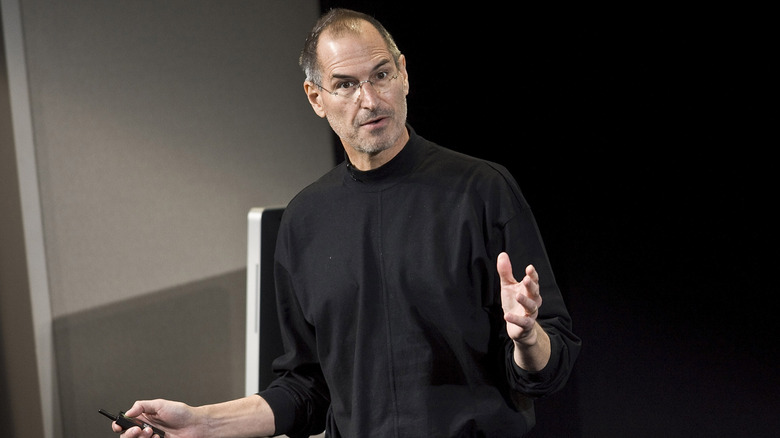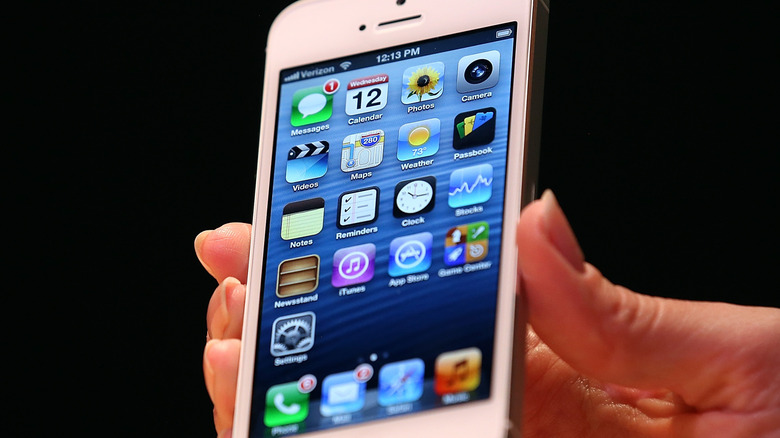Who Created The iPhone? (Hint: It's Not Steve Jobs)
Though Apple undoubtedly has a range of iconic devices to its credit, few stand as tall as the iPhone. Since the very first model went on sale in 2007, the mobile phone has absolutely revolutionized the cell phone industry. From the large, all-encompassing touchscreen to its unmistakable user interface, Apple's flagship phone changed how phones are designed and used forever. For the creation of such a game-changing device, which has culminated in the futuristic yet pricey Apple iPhone 16 Pro as of this writing, much of the credit has gone to one man: Steve Jobs. But, in reality, that credit should actually go elsewhere.
Per "The One Device: The Secret History of the iPhone" by Brian Merchant, back in the early 2000s, the folks at Apple were tinkering with devices like MP3 players and flip phones. They were increasing in functionality, showing a clear demand for more from consumers out of handheld devices. Thus, the company's designers, including iPod creator Tony Fadell and engineer Andy Grignon, got to work overhauling the average cell phone into something as innovative as it was functional. Although it took no shortage of trial and error, as well as the support of then-Apple Vice President Michael Bell, eventually, the iPhone as we know it today became a usable reality.
Suffice it to say, the creation of the iPhone was more of a team effort than one might think, with Steve Jobs being remembered and marketed as the sole mind behind the device. Ironically, he nearly prevented it from existing in the first place.
Jobs was hesitant of the iPhone when it was initially pitched
Steve Jobs' time as the man behind the iPhone can be traced back to the device's historic unveiling. At the Macworld 2007 event in San Francisco, California, the Apple icon took to the stage to unveil the device to the world. To the public, the whole affair made a lot of sense. One of the leading minds behind Apple comes out and introduces the company's latest innovation. However, for those within Apple itself, a different perspective was likely held. After all, in the years leading up to the iPhone's release, Jobs hadn't been the most supportive of the project — going as far as to try writing it off before it could even come to fruition.
The book "The One Device: The Secret History of the iPhone" revealed that Jobs was not initially aware of the iPhone's conception. Once he did learn of it, he wasn't too keen on it. According to Merchant, Jobs realized that working with companies like Verizon and AT&T to get the phone to users was more trouble than it was worth. Not to mention, he didn't foresee the general public having any interest in it. Nevertheless, after being worn down over a pivotal phone call by Michael Bell, Jobs allowed the Apple team to continue working on it. Several designs later, the iPhone was completed, with Jobs proudly showing it off at the aforementioned event.
Although it took convincing, Jobs eventually came to embrace the first iPhone (not to be confused with the one released in 1998). Thanks to elements such as strong sales numbers and positive reception from users, he remained a strong supporter of the technology for the rest of his life.
Jobs' efforts on the iPhone extended beyond his death
It goes without saying that the iPhone was a huge success. Within a mere few months, it sold over a million units and went on to sell millions more. All the while, it earned loads of praise from users, making it abundantly clear that Apple had a hit on its hands. This didn't go unnoticed by Jobs and the litany of Apple employees behind the device. In the ensuing years, they sought to take it further — now without an internal tug-of-war between Jobs and the rest of the team. Work on new models soon began, and Jobs appeared more than willing to present them to the public and offer his fullest endorsement.
On July 11, 2008, just over a year after the first iPhone launched, its successor, the iPhone 3G, hit the market. The iPhone 3GS followed on June 19, 2009, with the iPhone 4 releasing on June 24, 2010. These are all of the iPhones that would release within Jobs' lifetime, as on October 5, 2011, the longtime face of Apple died as a result of complications from a pancreatic neuroendocrine tumor. The iPhone 4S hit the market a few days later on October 14. That may make it seem as though this model was the last Jobs worked on, but that wasn't the case. He had reportedly been involved in the early development of the iPhone 5 as well, which was released on September 21, 2012.
At the end of the day, Steve Jobs had an undeniable impact on some of the best and worst iPhones ever released in his final years. However, given his apprehension toward the first model and the minimal input, calling him its sole inventor is simply not accurate.


